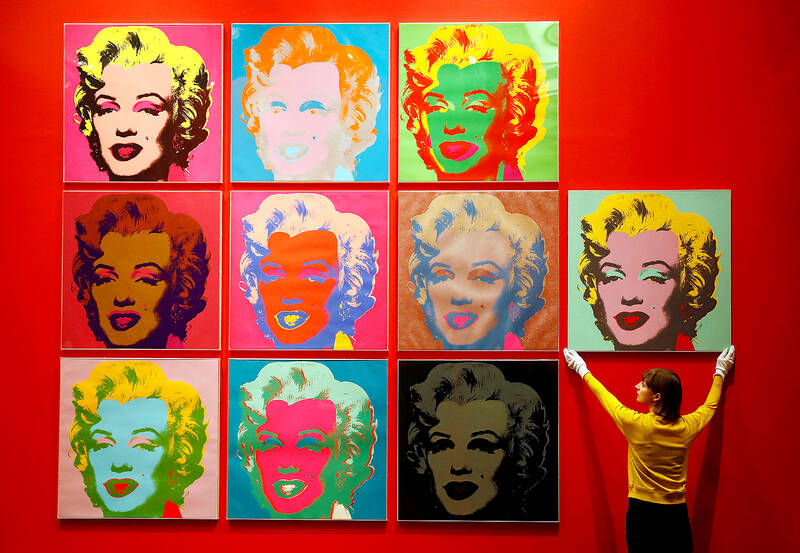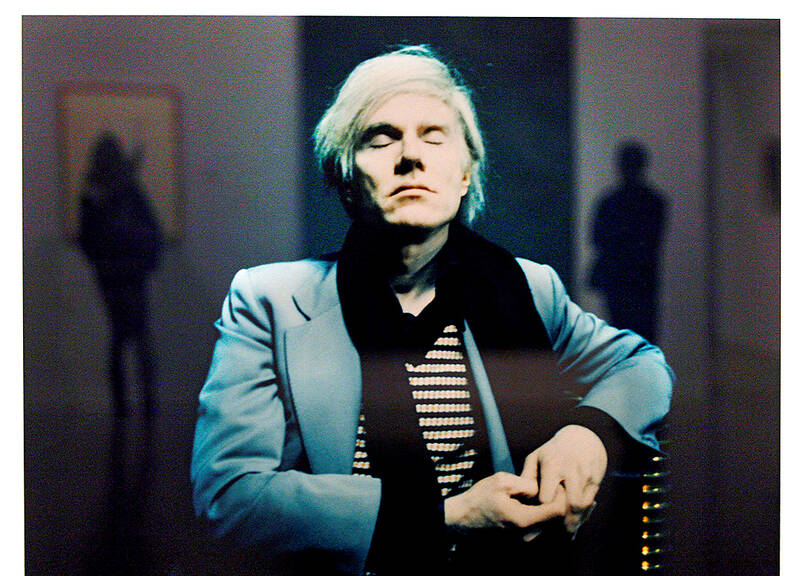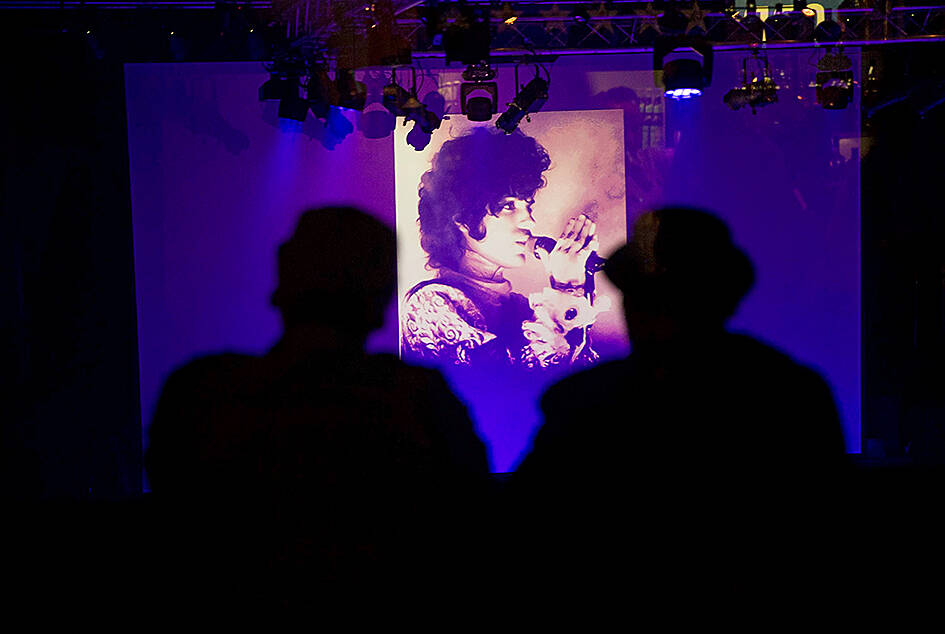Andy Warhol once said “Art is what you can get away with.” Now a legal fight surrounding his prints of Prince threatens to upend the world of pop art as well as music, books and videos.
In a fight that has outlived both men, the US Supreme Court will consider whether Warhol was within his rights to create 16 images of the musician in 1984 using a copyrighted photograph of the musician. The case could reshape the fair-use defense to copyright infringement for follow-on works, affecting music, videos and books, as well as Warhol’s iconic art.
IMPLICATIONS

Photo: Reuters
Both sides are emphasizing the potential stakes. The Association of American Publishers says expanding the fair-use defense could have a “catastrophic impact” on that industry, while representatives of the art community say the opposite result could have a chilling effect on artists and museums.
The case “is incredibly important to many, many people,” said Bruce Ewing, who co-chairs the intellectual property practice at Dorsey & Whitney in New York. “It has potential implications well beyond art. You’re talking about music, publishing, and many different types of creative industries.”
The showdown could draw the justices into an unfamiliar world, testing their eagerness — and perhaps ability — to assess differences between works of art or literature that share a common core.

Photo: Reuters
The path to the Supreme Court began in 1981 with a black-and-white photo taken of Prince by rock-and-roll photographer Lynn Goldsmith. Three years later, with Prince at the peak of his popularity, Vanity Fair paid Goldsmith a US$400 licensing fee so that Warhol could use the photo as an “artist’s reference” to create an image of the singer-songwriter for the magazine.
Warhol then created what became known as the Prince Series, consisting of 16 silkscreens, screen prints and sketches that gave his subject what the foundation called “a flat, impersonal, disembodied, mask-like appearance.”
Vanity Fair published one image in the 1984 issue. Warhol died three years later, and his copyrights were transferred to the Andy Warhol Foundation for the Visual Arts.

Photo: AFP
PRINCE’S DEATH
When Prince died in 2016, Vanity Fair parent Conde Nast paid the foundation US$10,250 to run a different image from the Prince Series on the magazine’s cover, without giving Goldsmith any additional payment or credit. Goldsmith then accused the foundation of copyright infringement.
A federal trial judge tossed out Goldsmith’s claim, but the New York-based 2nd US Circuit Court of Appeals reinstated it. The panel said Warhol’s image wasn’t “transformative” — and therefore wasn’t fair use — because it didn’t do enough to change the appearance of Goldsmith’s photo.
Warhol’s work “retains the essential elements of the Goldsmith photograph without significantly adding to or altering those elements,” Judge Gerard Lynch wrote for the appeals court.
At the Supreme Court, the foundation says the appeals court was wrong to focus solely on the visual appearance of the images. The foundation says the key question is whether the second work conveys a new “meaning or message.”
“While Goldsmith portrayed Prince as a vulnerable human, Warhol made significant alterations that erased the humanity from the image, as a way of commenting on society’s conception of celebrities as products, not people,” Roman Martinez, the foundation’s lawyer, argued in court papers. “The Prince Series is thus transformative.”
ALTERING A SONG
The foundation’s filing invokes Warhol’s famous Campbell’s soup can paintings — and a hint the Supreme Court may have dropped about those works last year. Ruling in a software copyright case, the court said a painting that replicates an advertising logo as “a comment about consumerism” may fall within fair use.
But Goldsmith says the foundation’s “meaning or message” approach would put judges in an impossible position.
“Courts cannot sensibly discern the meaning of art when artists, critics and the public often disagree about what art signifies,” contended Goldsmith’s lawyer, Lisa Blatt.
The brief points to Jackson Pollock, John Lennon, Pablo Picasso and Freddie Mercury as artists whose work defied any objective understanding, sometimes intentionally so.
“I’m looking to see if the justices understood any of the references to art and pop culture in the briefs,” Blatt quipped recently while speaking at Georgetown University Law Center.
Goldsmith’s brief also argues that the foundation’s “meaning or message” approach ignores the other fair-use factors listed in the 1976 Copyright Act, including the impact on the market for the original work.
Goldsmith has support from the Recording Industry Association of America and the National Music Publishers’ Association. The Motion Picture Association filed a brief that didn’t formally take sides in the case but said the Warhol position would “threaten the protection afforded all manner of copyrighted works.”
The Biden administration is also supporting Goldsmith, suggesting the court protect Warhol’s creation of the Prince Series but not the foundation’s commercial licensing of the Prince image. The images are now worth large sums of money, with one selling for US$173,664 in 2015.
That approach makes some art advocates uneasy. It makes no sense to say a work could be fair use when it’s created but not once it’s licensed or sold, said Jaime Santos, a Washington lawyer who filed a brief for a groups that include foundations for the late artists Robert Rauschenberg, Roy Lichtenstein and Joan Mitchell.
“There’s not a ton of confidence that those same principles won’t apply to the actual creation of the work itself,” Santos said. “So I think it really just kind of makes a mash of the case law and makes things pretty scary for anyone from museums to foundations to even smaller artists who are making works and using prior works as artists have done for centuries.”
The court is scheduled to rule by late June in the case, Andy Warhol Foundation v. Goldsmith, 21-869.

In the March 9 edition of the Taipei Times a piece by Ninon Godefroy ran with the headine “The quiet, gentle rhythm of Taiwan.” It started with the line “Taiwan is a small, humble place. There is no Eiffel Tower, no pyramids — no singular attraction that draws the world’s attention.” I laughed out loud at that. This was out of no disrespect for the author or the piece, which made some interesting analogies and good points about how both Din Tai Fung’s and Taiwan Semiconductor Manufacturing Co’s (TSMC, 台積電) meticulous attention to detail and quality are not quite up to

April 21 to April 27 Hsieh Er’s (謝娥) political fortunes were rising fast after she got out of jail and joined the Chinese Nationalist Party (KMT) in December 1945. Not only did she hold key positions in various committees, she was elected the only woman on the Taipei City Council and headed to Nanjing in 1946 as the sole Taiwanese female representative to the National Constituent Assembly. With the support of first lady Soong May-ling (宋美齡), she started the Taipei Women’s Association and Taiwan Provincial Women’s Association, where she

Chinese Nationalist Party (KMT) Chairman Eric Chu (朱立倫) hatched a bold plan to charge forward and seize the initiative when he held a protest in front of the Taipei City Prosecutors’ Office. Though risky, because illegal, its success would help tackle at least six problems facing both himself and the KMT. What he did not see coming was Taipei Mayor Chiang Wan-an (將萬安) tripping him up out of the gate. In spite of Chu being the most consequential and successful KMT chairman since the early 2010s — arguably saving the party from financial ruin and restoring its electoral viability —

It is one of the more remarkable facts of Taiwan history that it was never occupied or claimed by any of the numerous kingdoms of southern China — Han or otherwise — that lay just across the water from it. None of their brilliant ministers ever discovered that Taiwan was a “core interest” of the state whose annexation was “inevitable.” As Paul Kua notes in an excellent monograph laying out how the Portuguese gave Taiwan the name “Formosa,” the first Europeans to express an interest in occupying Taiwan were the Spanish. Tonio Andrade in his seminal work, How Taiwan Became Chinese,